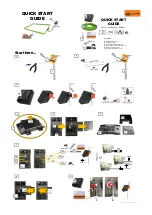
LTE Module Series
EG25-G Hardware Design
EG25-G_Hardware_Design 81 / 100
LTE-TDD B40 (10M)
-
97.8dBm
-
97.5dBm
-
99.2dBm
-
96.3dBm
LTE-TDD B41 (10M)
-
97.3dBm
-
97.4dBm
-
99dBm
-
94.3dBm
6.7.
Electrostatic Discharge
The module is not protected against electrostatics discharge (ESD) in general. Consequently, it is subject
to ESD handling precautions that typically apply to ESD sensitive components. Proper ESD handling and
packaging procedures must be applied throughout the processing, handling and operation of any
application that incorporates the module.
The following table shows the module’s electrostatic discharge characteristics.
Table 38: Electrostatics Discharge Characteristics (25ºC, 45% Relative Humidity)
Tested Points
Contact Discharge
Air Discharge
Unit
VBAT, GND
±10
±16
kV
All Antenna Interfaces
±10
±16
kV
Other Interfaces
±0.5
±1
kV
6.8.
Thermal Consideration
In order to achieve better performance of the module, it is recommended to comply with the following
principles for thermal consideration:
On customers’ PCB design, please keep placement of the module away from heating sources,
especially high power components such as ARM processor, audio power amplifier, power supply, etc.
Do not place components on the opposite side of the PCB area where the module is mounted, in
order to facilitate adding of heatsink when necessary.
Do not apply solder mask on the opposite side of the PCB area where the module is mounted, so as
to ensure better heat dissipation performance.
The reference ground of the area where the module is mounted should be complete, and add ground
vias as many as possible for better heat dissipation.
Make sure the ground pads of the module and PCB are fully connected.
According to customers’ application demands, the heatsink can be mounted on the top of the module,
or the opposite side of the PCB area where the module is mounted, or both of them.
















































